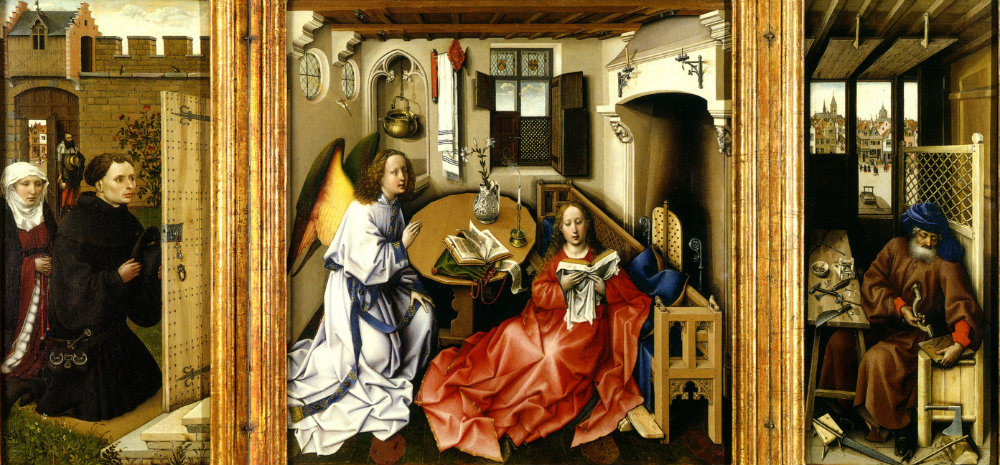Search:: Artists Alphabetically Artists by Country Artists by Century Artists by Movement
Robert Campin also known as Master of Flémalle
1375-1444
One of the Greatest Painters Of All Time
Dutch Renaissance Painter
Stylistically influenced by the following painters and art movements - Jan van Eyck and Gothic painters the Limbourg brothers
Education - apprenticed to a local goldsmith and later to the workshop of Robert Campin.

Diffrences Between Northern Renaissance and Italian Renaissance Art
Many of the early paintings of the Northern Renaissance perished through time and the fierceness with which the Iconoclastic battles were waged. The Northern Renaissance was different from the Italian Renaissance in many ways. Painters of the North focused upon secular society rather than the Church and overblown religious themes. Northern Renaissance painters emphasis the daily life of the merchant and peasant class. They also put a greater emphasis on spirituality, piousness and living a simple life. Artists such as Dieric Bouts and Peter Brugal the Elder painted inspirational biblical scenes, the merchant class at work, idyllic scenes of peasants working at everyday tasks, playing games and feasting. Northern Renaissance painters seemed more in touch with the people. According to art historian John C. Van Dyke "As a whole their subjects were single figures or small groups in interiors, quiet scenes, family conferences, smokers, card-players, drinkers, landscapes, still-life, architectural pieces. ."The Italian Renaissance, on the other hand, focused more on the aristocracy and the theocracy. Painters highlighted the individual and glorified worldly pleasures, Paintings were sumptuous, elaborate, expressive, and exhalted wealthy and powerful people. Author Clive Bell observed "But whatever the Italian painters of the Renaissance had to say they said in the grand manner. Remember, we are not Dutchmen. Therefore let all your figures suggest the appropriate emotion by means of the appropriate gesture—the gesture consecrated by the great tradition. Straining limbs, looks of love, hate, envy, fear and horror, up-turned or downcast eyes, hands outstretched or clasped in despair."
The Italian Renaissance painters focused heavily on religion, Roman Catholicism. Popes and church hierarchy were wealthy, powerful rulers. Like kings they were depicted in elaborate settings swaddled in furs and silks.
Important Words, People, Phrases, Chactoristics related to the Renaissance Art Movement - allegorical, Gospel parables, rebirth, 1 point perspective, Hieronymus Bosch, Limbourg Brothers, Roger Campin, Jan Van Eyck, Jean Fouquet, formation of a merchant class, glazing, impasto, scriptorium, illuminator, invention of the printing press, woodcuts, engravings, Antwerp, commerce, Northern Europe, Bruges, mythological scenes, genre painting, landscapes, portraits, moralizing overtones, human vices, lust, Protestant Reformation, paradise, spirituality, piousness, living a simple life, reform, Human Reasoning, merchant class at work, idyllic scenes of peasants, playing games, feasting, linear perspective, Heliocentric Theory, spiritually significant, illuminated manuscript, idealized biblical themes, scriptorium, emotion, illuminator, iconoclast, Age of Discovery, Virgin and Child, axonometric drawing, curiosity about the natural world, realistic use of colours and light, Bonfire of the Vanities, Old Testament stories, Gospel parables, The Blackdeath, Christian symbolism.
Require more facts and information about Rogier van der Weyden and Art history? Dig around every nook and cranny of the known universe for information this subject. Search Here
☼☼☼☼☼
© HistoryofPainters.com If you like this page and wish to share it, you are welcome to link to it, with our thanks. updated 3/7/2017